


Surprising Healthy Skin Tips
Eat Your Way to Healthy Skin
Eating fruits and vegetables can make your skin healthy. In a study published the PLoS One journal, researchers found that those who ate more colorful fruits and vegetables have healthier and more attractive skin. The reason for this is that colorful fruits contain carotenoid that boosts the tone of the skin. Moreover, fruits and vegetables contain more Vitamin C that can help fight free radicals that cause premature wrinkles and aging of the skin. Vitamin C also promotes the natural production of collagen in the body. For you to eat your way to healthy skin, make sure that you get 4.5 cups of fruits and vegetables daily.Don’t Apply Too Much Sunscreen
Do you have the habit of applying too much sunscreen when you get out? If yes, then chances are you are more likely irritating your skin than protecting it from the harmful rays of the sun. Most dermatologists agree that some sunscreens may contain irritants that causes skin rashes to develop. Harmful ingredients in sunscreen include benzophenones, octocrylene and other fragrances. Although the skin rashes look like allergic reactions to sunscreen, they are more like your body’s response to sweat. Sunscreen can potentially cause heat rashes. If you do apply sunscreen, make sure that you apply an ample amount and not slather your entire body with it.Wash Your Face Twice a Day
Most women have the habit of washing their face as many times as they can. But research shows that washing your face twice a day is actually optimal. As the more you wash your face, the more you strip it from its natural oils that protect the integrity of the skin. Another bad thing about washing your face all the time is that the exfoliant that you use may contain tiny microbeads that are bad for the environment especially the marine life. So, if you wash your skin, make sure that you use a wash cloth instead of exfoliants.Sleep on Your Back
It may seem strange but your sleeping position can also result in the development of wrinkles on your face. Most people love to sleep on their side or stomach but this has shown to cause wrinkles on the face because your face is pressed on the pillow for long periods of time. The best position to avoid wrinkles is to sleep on your back. However, if you suffer from sleeping problems like sleep apnea and snoring, then sleeping on your back is not such a good idea. If you prefer to sleep on your side, then using a silk pillowcase can ease the pressure on your face while you are sleeping.Exfoliate in The Morning
Most people have the habit of exfoliating at night before going to bed believing that the exfoliating serums will be better absorbed by the skin. However, this cannot be further from the truth. If you exfoliate in the morning, then you are stimulating good circulation on the skin that, in turn, stimulates collagen. In fact, exfoliating the skin after doing your exercise is better because of the improved circulation that you have after doing any physical activities.Don’t Apply Anything on Your Nose
Did you know that the nose contains the largest pores in the face? It is where most of the natural oil in our face is secreted. So, if you suffer from blackheads or shiny nose, then don’t do your usual regimen and apply different serums over your nose. By applying serums and creams on your nose, your pores will easily get clogged up. Thus, you end up having more blackheads and, worse, breakouts. If you have to apply something on your nose, it should only be sunscreen and nothing more. Still, if you are worried about your blackheads, you can deal with it by washing your nose with warm water and mild soap. If the pores are not clogged up, your skin will naturally deal with it and it will eventually go away.Healthy Skin Treatment in Los Angeles with Doctor Binder
If you feel like you may be a candidate for skin treatment in Los Angeles, or you’ve been recommended to have one by another medical professional, contact Doctor Binder to schedule an appointment and consultation to discuss your options in greater detail.Neck Lift Surgery: When to Get it and What It Involves
 Unfortunately, aging gets to us all, with signs of our passing years cropping up in different places for all of us. Stubborn fat, wrinkly skin, and sagging in all the wrong places may have you longing for the days of your once-youthful appearance. Fortunately, the current state of medicine allows for some truly magical solutions to just such problems. If you are interested in removing fat, there are several body procedures tailored for all shapes and sizes, if you wish to alter your facial appearance there are a multitude of unique surgeries to fit every individual’s needs. More specifically, within facial cosmetic surgery, there are multiple levels of aesthetic and functional procedures to help restore and rejuvenate your features and skin.
Unfortunately, aging gets to us all, with signs of our passing years cropping up in different places for all of us. Stubborn fat, wrinkly skin, and sagging in all the wrong places may have you longing for the days of your once-youthful appearance. Fortunately, the current state of medicine allows for some truly magical solutions to just such problems. If you are interested in removing fat, there are several body procedures tailored for all shapes and sizes, if you wish to alter your facial appearance there are a multitude of unique surgeries to fit every individual’s needs. More specifically, within facial cosmetic surgery, there are multiple levels of aesthetic and functional procedures to help restore and rejuvenate your features and skin.
What is Cosmetic Neck Surgery?
The goal of a neck lift procedure (lower rhytidectomy) is to revitalize aging skin around the neck and jawline. Though the term “neck lift” implies strictly a tightening process, the surgery has the ability to shape and sculpt different areas of the neck, even with the potential to be combined with other facial cosmetic procedures. The skin around our face and neck can be affected by several circumstances, including: • Heredity factors • Stress • Rapid weight loss • Sun Exposure • Smoking • Alcohol consumption • Gravity • Other environmental contaminants These contributors along with just our body’s natural aging process, causes less than desirable changes to occur to our face and neck. Excess neck skin, fat deposits under or around the neck, and irregular contours beneath the jawline can all make us a little less confident than we should be and a little more self-conscious than we have to be. There are a variety of neck lift surgery options available.Submental
As we age, the muscles in our neck begin to fall and drag the skin down with it. Over time, this is what causes bands to appear around the anterior of the neck. Because these muscles are so important to the structure and smoothness of our neck, they are re-purposed rather than removed. A supportive sling is created by isolating and relocating the platysmal muscles to help reinforce the neck.Bidirectional Lift
This procedure targets the center and lower potions of the neck. Muscle underneath the chin is isolated and turned upward to reinforce and suspend drooping areas of muscle and fat. The result is a more well-defined jawline and better-contoured neck. The bidirectional lift is known as one of the longer lasting neck lift surgeries available.Submental Liposuction
Liposuction is a great way to reduce fat around the neck for a smoother and tighter contour. Keep in mind, this is best suited for younger patients with enough skin elasticity around excess fat. Without this flexibility, a submental liposuction can have negative effects on the appearance of the shape of the neck.Candidacy
If you are in good general health and are free of any existing conditions that could impair the healing process, you are most likely a good candidate for a neck lift surgery. As with any cosmetic procedure, it is always helpful to consult with a qualified cosmetic surgeon to get a clear idea of what you want done and to maintain healthy and realistic expectations for your results. Dr. Binder’s cosmetic surgery in Beverly Hills is often considered the best option for solutions regarding facial cosmetic surgery. Our office is dedicated to establishing proper communication with prospective patients. Contact us today to schedule a consultation for your neck lift surgery in our Beverly Hills office.Cosmetic Eyelid Surgery Essentials
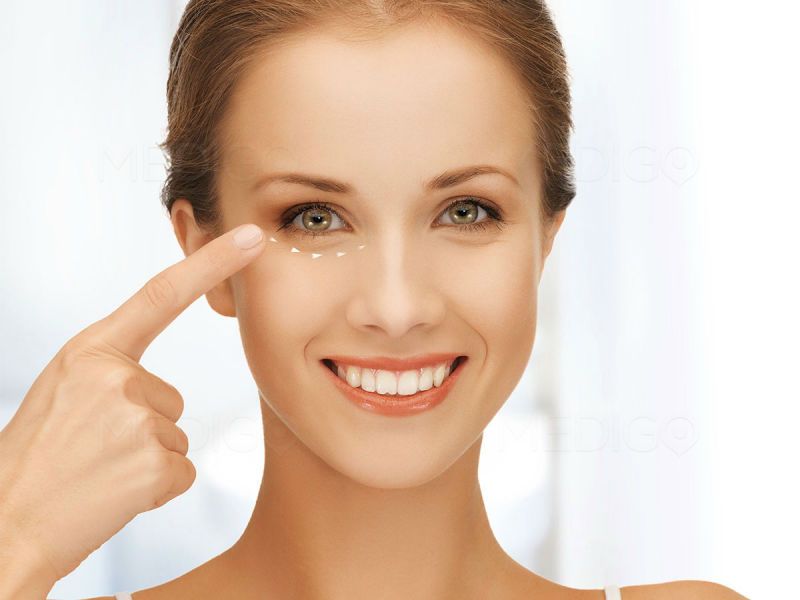 As we get older, our skin loses its elasticity. This is often evident in areas around the eyelids. Accumulation of lose skin creates a lot of creases in the lower eyelids. Moreover, the lose muscles underneath also creates protruding cushions around the eyes that give the appearance of bags. While drooping eyelids do look unsightly, the most disadvantageous thing is, they can obstruct your vision.
It is normal for people to suffer from a droopy eyelid. But if you want to correct your eyelids, you can get an eyelid reduction surgery. Also called blepharoplasty, cosmetic eyelid surgery removes the excess skin and fat around the eyes. It thus reduces the swelling and improves its overall look. Eyelid surgery may sound simple, but there is a lot of essential information that you need to know first.
As we get older, our skin loses its elasticity. This is often evident in areas around the eyelids. Accumulation of lose skin creates a lot of creases in the lower eyelids. Moreover, the lose muscles underneath also creates protruding cushions around the eyes that give the appearance of bags. While drooping eyelids do look unsightly, the most disadvantageous thing is, they can obstruct your vision.
It is normal for people to suffer from a droopy eyelid. But if you want to correct your eyelids, you can get an eyelid reduction surgery. Also called blepharoplasty, cosmetic eyelid surgery removes the excess skin and fat around the eyes. It thus reduces the swelling and improves its overall look. Eyelid surgery may sound simple, but there is a lot of essential information that you need to know first.
Why Is It Needed?
There are many reasons why eyelid surgery is necessary. Aside from improving the overall aesthetics, eyelid surgery is also performed to improve the functional vision of the patient. Having droopy and baggy eyelids can impair the vision and reduce the ability of the patient in doing certain tasks like driving or using the computer. Moreover, droopy eyes also make it difficult for people to wear contact lenses or glasses. There are many other conditions that require the need for functional eyelid surgery and these include irritation caused by the excess skin of the eyelids rubbing together. And even forehead discomfort due to strained muscles around the eyelid area. Once these conditions have been identified, eyelid surgery is performed by ophthalmologists, ENT surgeons and general plastic surgeons.Preparation Before the Surgery
Prior to the day of your surgery, there are some things that you need to do to help you during the operation. Below are the essential things that you must know before undergoing the eyelid surgery. • Stop taking blood-thinning medications, like aspirin and ibuprofen two weeks before the surgery to reduce the risk of excessive bleeding. • Do not drink anything after midnight and eat only a light meal the evening before the operation. • Take the required medication the morning of the procedure. These include medication for blood pressure and so on. • Never wear eye makeup during the day of the operation. • Make sure that you have someone to take you home after the operation.How Is the Surgery Performed?
The operation can be carried out by either general or local anesthesia. In general anesthesia, the surgeon makes an incision around the natural lines of the eyelids where the excess fat and skin are excised. Once the fat and lose skin are removed, the incision is closed. A resurfacing laser can also be used to tighten the external skin as well as reduce wrinkles and remove any external scars. After the surgery, it is helpful if you keep your head elevated for a couple of days. This is necessary to improve the drainage around the head area. You can also use a cold compress or ice packs to ease the swelling. After several days to a week, you will go back to the doctor to have the sutures removed. However, you will continue to use suture strips for a week more to provide support to the lower eyelids.The Benefits of Cosmetic Eyelid Surgery
Eyelid surgery has the amazing ability to both restore youthfulness to your face by removing sagging skin and tired-looking bags, while potentially aiding in your ease of vision. Few cosmetic surgeries offer the benefits of this. Additionally, eyelid surgery can be performed in conjunction with other cosmetic procedures. Skin treatments such as chemical peels can add (or rather take off) a whole new layer to your procedure, gifting you with beautifully young skin and permanently refreshed eyes.Eyelid Surgery in Los Angeles with Doctor Binder
If you feel like you may be a candidate for eyelid surgery in Los Angeles, or you’ve been recommended to have one by another medical professional, contact Doctor Binder to schedule an appointment and consultation to discuss the procedure in greater detail.The Rhinoplasty Recovery Process
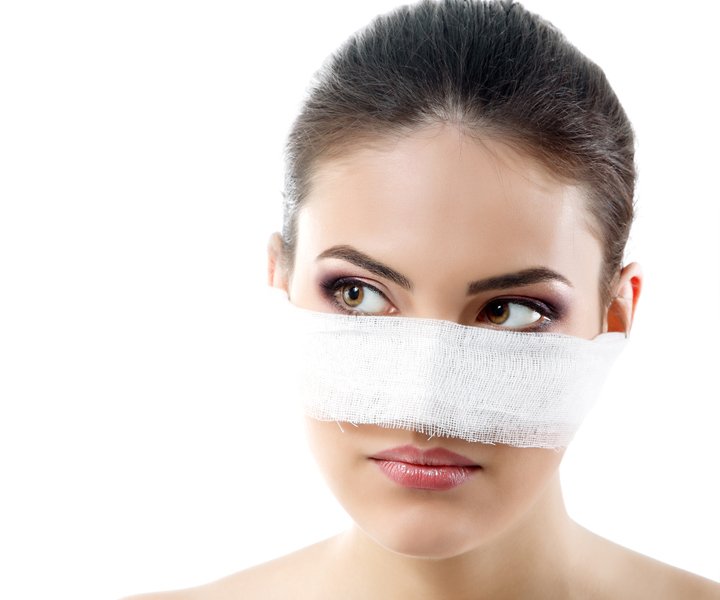 You’ve done the research. You’ve chosen the ideal doctor. You’ve prepared for your rhinoplasty procedure… but what happens afterward? The following timeline is a handy guide to help you gauge your expectations and plan accordingly.
You’ve done the research. You’ve chosen the ideal doctor. You’ve prepared for your rhinoplasty procedure… but what happens afterward? The following timeline is a handy guide to help you gauge your expectations and plan accordingly.
PRE POST SURGERY
Don’t wait until after the procedure to prepare; make the necessary decisions to ensure that your recovery period goes as smoothly as the surgery itself. Request two weeks leave from your place of work, just to be safe. You may not require the full two weeks, but you want to be sure to give yourself ample time to heal without overly stressing your body. Also, you should designate a point person to look after you in the hours and days following the procedure. This loved one will be an advocate who can be at the hospital when required, drive you home safely, tend to your needs, and watch over you in the event of any complications that may arise.NASAL SUPPORT SYSTEM
You will wake up to a brand new person staring back at you in the mirror. Your nose will be buttressed by a splint and additional material like gauze and/or bandages. Don’t be alarmed; this is a temporary phase meant to provide you with maximum support. Once you come to terms with this initial transition, it’s time to move forward.THE FIRST TWO DAYS
As with any surgical procedure, the patient must emerge from the fog of anesthesia. This can be disorienting, but shouldn’t last more than a day or two. During this time, avoid disturbing the delicate structure of your new facial features; be sure not to blow your nose. Excessive irritation will set back your recovery process. Remember that nosebleeds are common during these first 48 hours, so allow the natural clotting process to take effect. However, if the aforementioned bleeding is excessive or persistent, consult a doctor immediately.THE FIRST WEEK
In addition to nosebleeds, you should expect a modicum of swelling, bruising, and general puffiness during the first week of recovery. To alleviate pressure on the affected area, be sure to elevate your head in order to promote ideal circulation. Also, employ cold compresses on the swollen facial tissue to lessen these side effects as much as possible. Hydration is the key to a speedy recovery. Water infuses your cells with the moisture they need to facilitate proper healing and regeneration. You will also need to increase your intake of liquids as you ingest any prescribed pain medications. Some of these pills tend to cause dry mouth, so be sure to accompany them with a refreshing glass of H2O.RETURN VISIT
After about a week, you should plan on a follow-up doctor’s appointment. This gives your medical team the chance to assess your progress, listen to your concerns, and proceed to the next phase of your recovery. Your doctor will remove the gauze and/or splint supporting your nasal passages, as well as any stitches you may have. He or she will deduce how well you are responding to these benchmarks and advise you on how to care for yourself moving forward.DOCTOR’S ORDERS
Throughout the recovery process, it is imperative to heed your physician’s instructions. Be sure to dress your wounds lightly with products (such as antibacterial salve, warm water, non-abrasive cloth, etc.) specified by these directives. If your medical staff recommends the continued use of pain meds, you must follow the dosage and frequency of your prescription strictly.DON’T RUSH THE PROCESS
To prevent possible damage to the affected area, you should avoid strenuous activity (like sports or heavy lifting) for eight weeks. Any unwanted contact with your nose could change its shape during these formative days, and it could have long-lasting ramifications on the overall health of your face. You should also swear off airline travel during the first two months of recovery; the change in barometric pressure can aggravate your nasal passage and damage the tissue that is in the process of repairing itself.BE A PATIENT PATIENT
Rhinoplasty is a delicate process. You shouldn’t expect results overnight; the human body isn’t equipped to change that rapidly. Minor facial swelling may persist for several months after the date of your initial procedure, and that’s healthy and normal. In fact, it may take up to a full year for the ultimate results of your rhinoplasty to take their effect. You must grow into your new look… and your new look must adhere to your specific lifestyle. Be sure to embark on this journey of self-discovery and exploration with the right attitude, as well as a team that understands your needs, worries, and long-term cosmetic goals. William J. Binder, M.D., is a seasoned professional, but he’s also a great listener. Call (310) 858-6749 today to discuss a potential procedure for you or a loved one, and schedule an appointment to turn your rhinoplasty dreams into realities.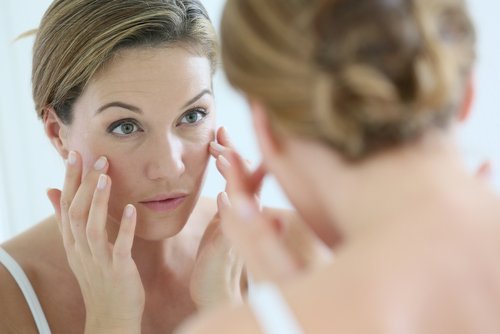
Aging Skin & How to Slow It Down
The Aging Process
Before we start discussing treatment options, let’s talk a little bit about how our skin ages. As we get older, our skin begins to lose many of those vital substances that keep it plump and elastic. For example, after the age of 20, our skin begins to produce one percent less collagen a year while losing its ability to self-exfoliate. In our thirties, aging skin begins to look dull and thin as it loses the ability to hold moisture in the outer layers and fat cells shrink. By our forties, virtually no collagen is produced anymore, causing collagen and elastin fibers to become damaged or break, leading to fine lines and wrinkles. By the time we finish our fifties, our oil glands have begun to shrink, leaving skin dry, dull, and easily damaged. Finally, menopause can leave the skin looking and feeling drier, more sensitive, thinner, and less toned. All of these things combine to create the aging process that we are familiar with.Rejuvenating Procedures
Now that we know how and why aging occurs, let’s talk treatment options. Fortunately for those wanting a more youthful look, there are a variety of rejuvenation procedures available at a variety of price points, ranging from treatments applied to the skin’s surface to precise surgeries. Which of these procedures is right for you depends on your health, budget, and signs of aging, as well as the degree of invasiveness that you are comfortable. Talking to your doctor about your health history and goals for your procedure will help you determine which avenue of treatment is best for your situation. These procedures can generally be performed alongside each other, and this may be recommended for the best results, but is not necessary to slow or reduce the appearance of the symptoms of aging.Injected Treatments
Botox is the most common cosmetic treatment and probably one of the most well-known. Botox reduces the appearance of fine lines and wrinkles by forcing facial muscles to relax. Though many people fear having a “frozen” or inexpressive expression after Botox treatment, when applied by a qualified medical professional, Botox does not have this result. Most other injected anti-aging treatments are dermal fillers. These products replace naturally occurring substances that begin to deplete from the skin as you age. Some fillers use the same substances, like collagen or hyaluronic acid, while others use alternative substances. Either way, these fillers can be used to fill in fine lines, wrinkles, and hollow areas or plump thinning lips. In some cases, they can even reduce the appearance of scars or other blemishes. Common dermal name brands include Cosmoderm, Zyderm, Restylane, Juvederm, Perlane, Sculptra, and Radiesse. Like Botox, the results of these injections are not permanent, though the exact length of the treatment depends on the product and patient.Skin Resurfacing Treatments
Fine lines, wrinkles, pigmentation problems, and more can be addressed with skin resurfacing treatments, which work essentially by providing a thorough exfoliation treatment and encouraging healthy, beautiful skin development. These treatments are minimally invasive and excellent at slowing and resolving minor signs of aging, but they cannot provide comprehensive repairs for deep wrinkles, sagging skin, or severe scarring. The three main types of skin resurfacing treatments are dermabrasion, laser treatments, and chemical peels. Dermabrasion involves removing dead skin with a diamond tipped vacuum, improving skin texture and the appearance the lines and uneven pigmentation. Laser skin resurfacing is performed by using a gentle but precise laser to remove damaged skin. This treatment is especially successful in improving hyperpigmentation and the appearance of scars. Finally, chemical peels involve the application of a chemical solution, which removes dead skin cells and aids in the healthy regeneration of the skin underneath.Lift Surgeries
Surgical treatment is generally the best option for patients looking for more thorough age slowing and age reversing treatments. While other surgical options can be used for rejuvenation purposes, eyelid surgery, facelifts and neck lifts are the most common choice. These treatments can be used for many of the most severe signs of aging, including a double chin, under eye bags, sagging eyelids, hollow cheeks, and a bandy neck. However, it’s important to remember that, while these surgeries can give comprehensive, but natural looking results, they do not stop the aging process and, while these surgeries can be performed multiple times, each consecutive surgery is less able to provide thorough results than the last.Your Skin Rejuvenation Expert
Regardless of the rejuvenation procedure you choose, you deserve to have your skin care performed by the best. Dr. William J. Binder is experienced, acclaimed, and considered one of the world’s leading facial plastic surgeons. Contact his office today to find out more and schedule your consultation.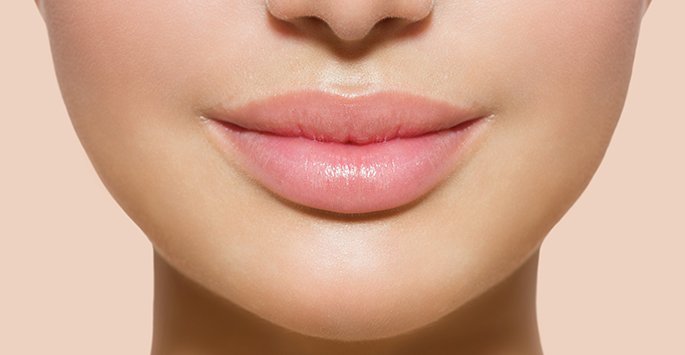
When to Consider Lip Augmentation Surgery

Avoiding Skin Cancer
Minimize Sun Exposure
Exposure to harmful UVA/UVB rays from the sun is the single largest risk factor for skin cancer, so effective skin cancer prevention requires minimizing exposure to the sun. Tans and burns are huge risk factors for skin cancer later on, but sun exposure without tanning or burning still increases the risk. Stay indoors or seek shade when the sun is at its most damaging, between 10 am and 4 pm. When outside, keep your skin covered as much as is comfortable for the weather. A wide brimmed hat and UV blocking sunglasses can provide protection for your face. Make sure screens are used to block infants from the sun without overheating them. Do not intentionally burn or tan, either in the sun or using indoor tanning devices. Use an artificial tanning product instead to get that bronze glow without the risk.Wear SPF Daily
Of course, totally avoiding sun exposure is neither practical or healthy. One can reap the benefits of sun exposure while avoiding its dangerous effects by using sunscreen each day. A sunscreen with broad spectrum (UVA/UVB) protection and an SPF of at least 15 can be worn for everyday use. A sunscreen-only product can be used, but many cosmetics and moisturizers also offer sun protection, but check the label of a product to ensure that it offers broad spectrum protection of an adequate SPF before relying on it for protection. For extended outdoor activity, use a water-resistant broad spectrum sunscreen with an SPF of 30 or more. Apply about 2 tablespoons of sunscreen to the whole body at least 30 minutes before going outside. Reapply after swimming or significant sweating, and every two hours regardless of activity. Don’t forget easily missed areas, like the ears, lips, and the part of the hair.Skin Cancer Examinations
Check yourself for skin cancer from your scalp to your feet at least once a month, and use a mole map to chart what you find, so you’ll know if something changes or if something new appears. Have a friend or family member help you check hard to see areas. Know the ABCDEs of identifying possibly cancerous or precancerous spots:- Asymmetry: the sides of the mark don’t match
- Border: the mark has an irregular or undefined edge
- Color: color is uneven or unusual, such as black, white, red, or blue
- Diameter: the mark is larger than 6mm in diameter, or larger a pencil eraser
- Evolving: the mark looks different from others on your body or is changing over time
Skin Cancer Treatment
Unfortunately, while protective measures certainly minimize the risk of skin cancer, even the most careful person can still experience it. In this case, surgical intervention is necessary to remove the cancerous or precancerous cells. Because of the risk for scarring, many patients elect to have the surgery performed by a skilled and experienced plastic surgeon, as plastic surgeons are both able to remove the growth and are knowledgeable about surgical techniques that minimize the chances of scarring. Some plastic surgeons, such as reconstructive plastic surgeons, actually specialize in these types of surgeries. One of these types of plastic surgeons is Los Angeles based Dr. William J. Binder. Dr. Binder is one of the world’s leading facial plastic and reconstructive surgeons, and is board certified by both the American Board of Facial Plastic and Reconstructive Surgery and the American Board of Otolaryngology and Head and Neck Surgery. Though Dr. Binder conducts and publishes research extensively, writes for industry publications, and often travels to lecture and train other surgeons, his greatest passion is in working with patients. Avoiding skin cancer, like any cancer, is scary. Don’t choose just any doctor to perform your surgery. Choose a skilled, compassionate, and experienced surgeon who will help you through the process every step of the way, giving you the knowledge and support you need. Contact Dr. Binder’s office today to schedule your consultation.The Ultimate Facelift FAQ
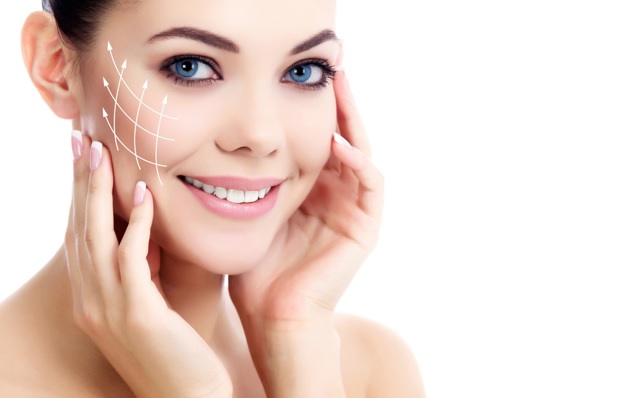 There’s a popular saying that “age is just a number”. Although that would be ideal, the reality is, age is also a shape, texture, and sometimes painful reminder of that number is. While we cannot do anything to reverse the aging process, advancements in medicine have allowed us to cosmetically enhance our physical features to help restore some of that youthful glow that becomes sorely missing as we grow older. A facelift surgery combines sculpting and lifting to different parts of the face and neck depending on the aging signs in a particular patient. Like any cosmetic surgery, a facelift can sound intimidating to those unfamiliar with facial cosmetic procedures. As with any medical procedure it is smart to first ask yourself a few questions before embarking on your journey.
Q. How is a facelift performed?
The procedure involves the lifting of deeper tissues within the skin to achieve a healthier and more youthful face. Many patients are apprehensive about this surgery, because they are afraid of artificially tight, “mask”-looking results. With the right surgeon, a successful facelift should be able to anatomically relocate midfacial soft tissue rather than just pull it back. The fat and jowls that have begun to droop with age now rest higher up, back where they were when you were younger. Results are natural looking and do not inhibit any facial expressiveness.
Q. How long will a facelift last?
The lifespan of a facelift surgery will depend mostly on the individual’s aging process. Everyone ages differently and factors like general health, sun exposure, smoking, diet, exercise, and heredity all play important roles in how long your results will last. Typically, aesthetic signs of aging can be treated with a successful facelift for five to ten years. Remember, a facelift procedure is meant to correct signs of aging not stop the process all together.
Q. When is a facelift appropriate?
This kind of cosmetic procedure is appropriate for individuals who wish to add volumetric filling and augmentation of deeper soft facial tissue. Patients who wish to alleviate wrinkles and sagging tissue will benefit from this. A facelift provides support and structure to the face for a rejuvenated appearance.
Q. What are common signs of aging?
There’s a popular saying that “age is just a number”. Although that would be ideal, the reality is, age is also a shape, texture, and sometimes painful reminder of that number is. While we cannot do anything to reverse the aging process, advancements in medicine have allowed us to cosmetically enhance our physical features to help restore some of that youthful glow that becomes sorely missing as we grow older. A facelift surgery combines sculpting and lifting to different parts of the face and neck depending on the aging signs in a particular patient. Like any cosmetic surgery, a facelift can sound intimidating to those unfamiliar with facial cosmetic procedures. As with any medical procedure it is smart to first ask yourself a few questions before embarking on your journey.
Q. How is a facelift performed?
The procedure involves the lifting of deeper tissues within the skin to achieve a healthier and more youthful face. Many patients are apprehensive about this surgery, because they are afraid of artificially tight, “mask”-looking results. With the right surgeon, a successful facelift should be able to anatomically relocate midfacial soft tissue rather than just pull it back. The fat and jowls that have begun to droop with age now rest higher up, back where they were when you were younger. Results are natural looking and do not inhibit any facial expressiveness.
Q. How long will a facelift last?
The lifespan of a facelift surgery will depend mostly on the individual’s aging process. Everyone ages differently and factors like general health, sun exposure, smoking, diet, exercise, and heredity all play important roles in how long your results will last. Typically, aesthetic signs of aging can be treated with a successful facelift for five to ten years. Remember, a facelift procedure is meant to correct signs of aging not stop the process all together.
Q. When is a facelift appropriate?
This kind of cosmetic procedure is appropriate for individuals who wish to add volumetric filling and augmentation of deeper soft facial tissue. Patients who wish to alleviate wrinkles and sagging tissue will benefit from this. A facelift provides support and structure to the face for a rejuvenated appearance.
Q. What are common signs of aging?
- Decreased skin elasticity
- Depressions and facial wrinkles
- Thinning lips
- Sagging, dry skin
